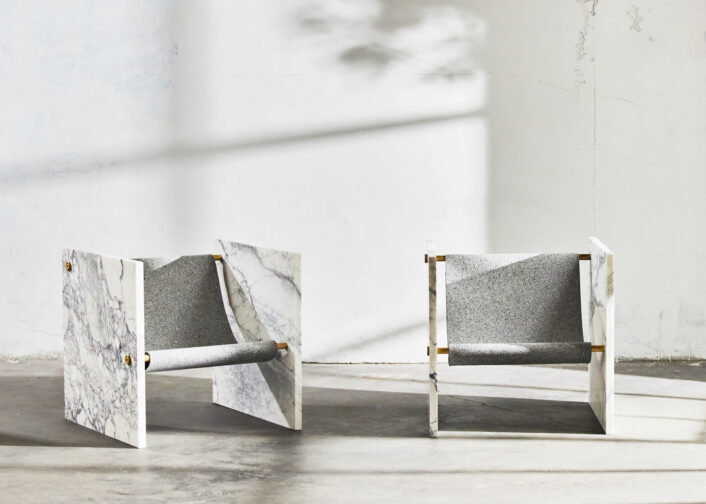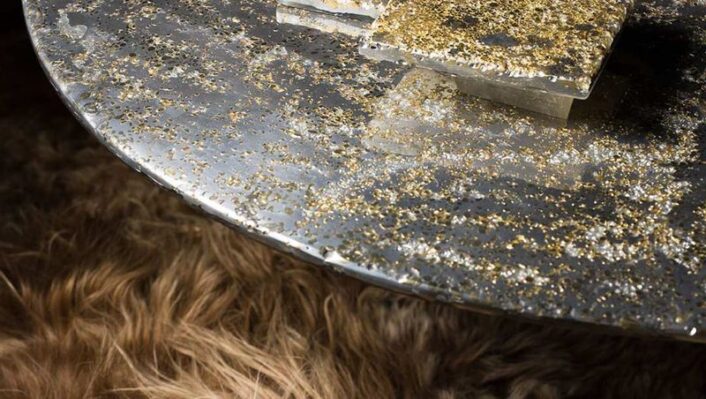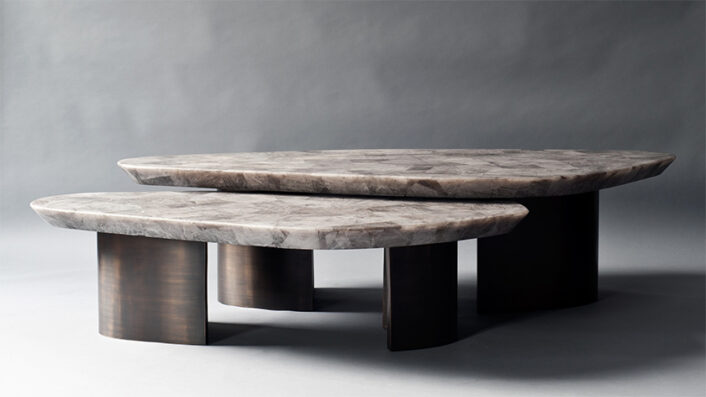Design
James De Wulf
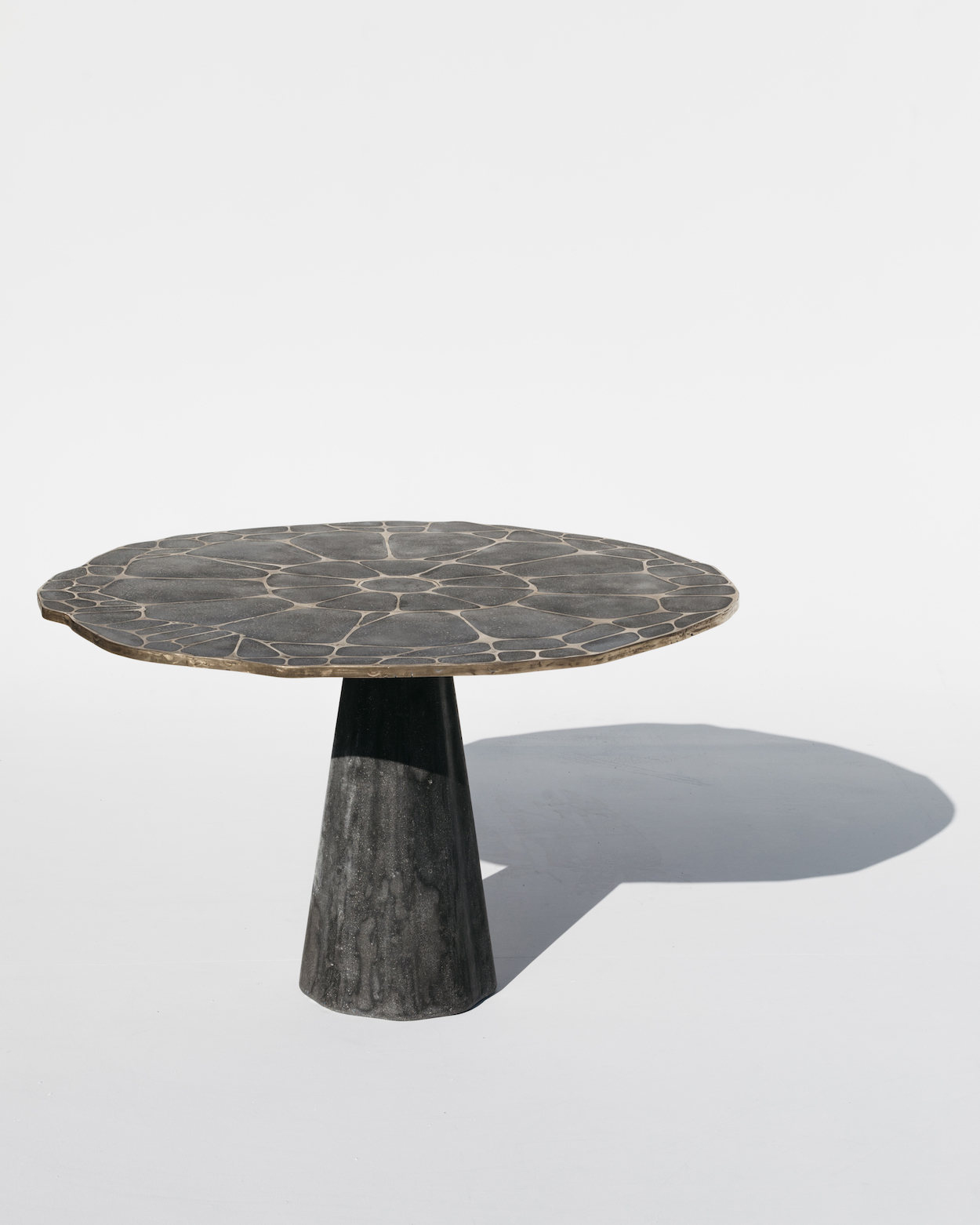
Exo Locking Dining Table
Image courtesy of: Surface Magazine, photographed by: Cameron Strand
James De Wulf first began designing furniture nearly two decades ago. Until recently, he was known for having mastered the art of (courtesy of Surface Magazine) “crafting concrete furniture.” However for the designer, becoming a furniture designer took a circumvented route… after graduating from Emory University, the young De Wulf worked in investment banking prior to turning to real estate development.
It was while he worked in real estate that his trajectory changed. Upon visiting a concrete shop for a new development project, James became fascinated by concrete as a material source. Profoundly moved by its (courtesy of the designer’s website) transformation from liquid to stone, his passion for handmade design began.”
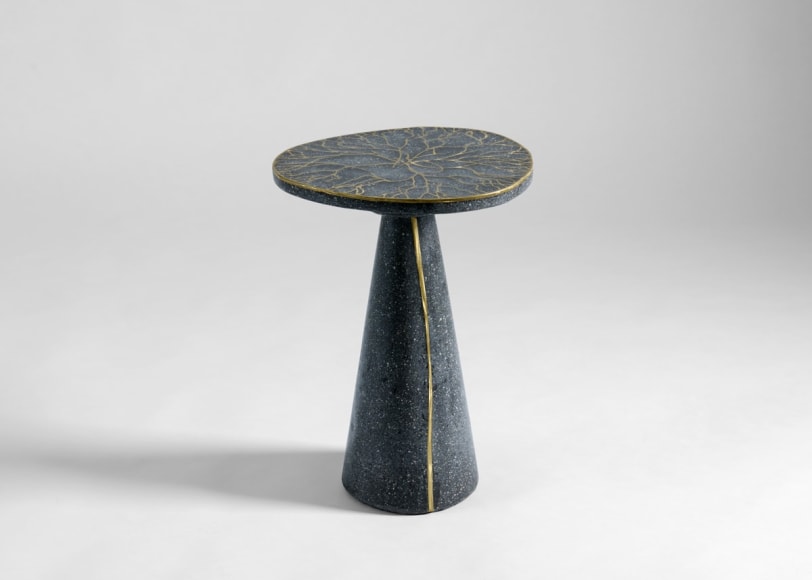
Exo side table, made from bronze and concrete.
Image courtesy of: Maison Gerard
In 2004, De Wulf was able to fully explore the medium of concrete with a focus on concrete countertop installations. From the start, his attention to detail was recognized by a number of high-level clients; soon, De Wulf was being asked to design commissions on a project-by-project basis.
Over the course of time, De Wulf Concrete was founded as a small, specially-tailored design firm that serves the needs of interior decorators, architects, residential clients, and commercial clients. After being established for ten years, the designer moved to Europe in order to develop his business abroad.
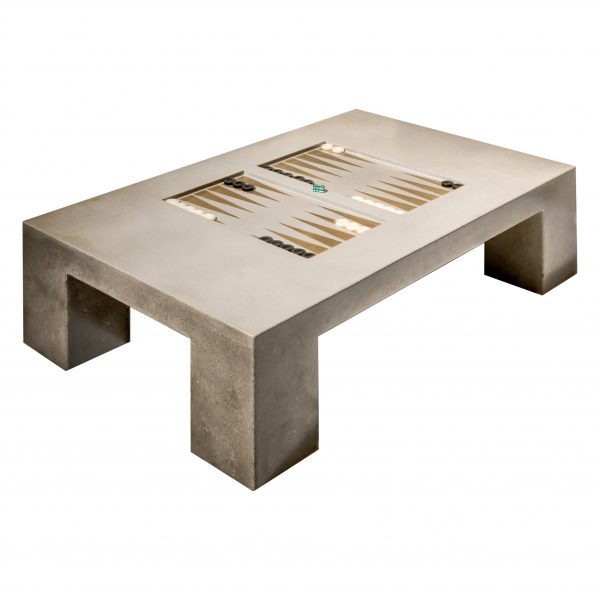
Backgammon coffee table made from cast, carbon fiber-reinforced concrete. Available in Natural Tone, Dark Grey, White and Black, and Light Grey.
Suitable for indoor and outdoor use, the table is sealed and waxed to achieve a unique luster.
Image courtesy of: James De Wulf
Today, the notoriously nomadic designer is based in Los Angeles where he has become known for his originality and innovativeness with concrete. He still refers back to what he learned from the Italian architect and industrial designer, Angelo Mangiarotti, (courtesy of Surface Magazine) “This guy taught me how to use the weight of my material to my advantage.”
De Wulf is always pushing the limit with his designs’ appearances and functions; perhaps that is because he is never content. These days, De Wulf often combines concrete with other metals including brass, bronze, iron, steel, and stainless steel.
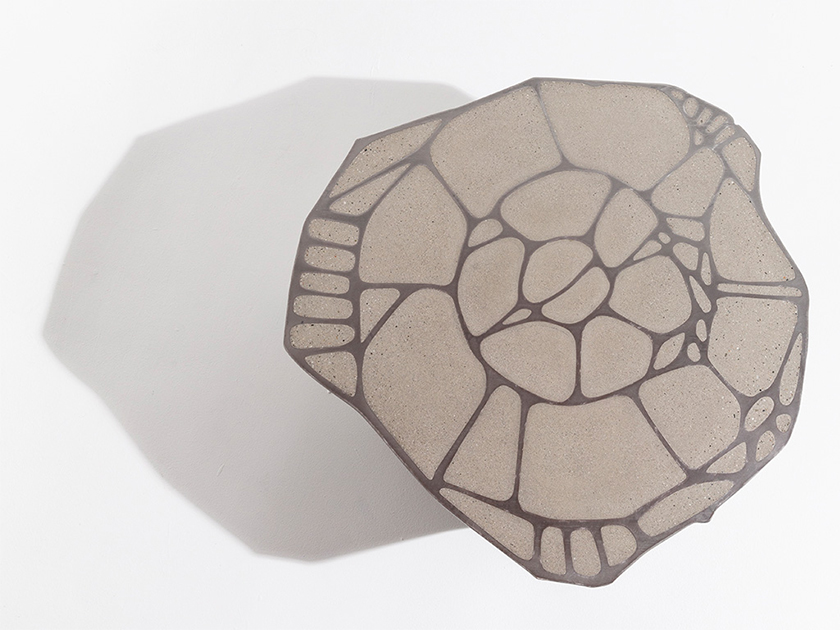
Top view of the Exo Low Table in concrete and stainless steel.
Image courtesy of: James De Wulf
De Wulf has been successful at designing beautiful, non-corrosive metal pieces that elevate even the most impressive interiors. He calls his furniture items “concrete couture” innovations that “pay homage to natural symmetry and the exoskeletons of microscopic organisms stretching across time and space.”
De Wulf’s pieces are the polar opposite of throwaway; these works-of-art are meant to live forever and they often become the anchor of any space in which they are placed.
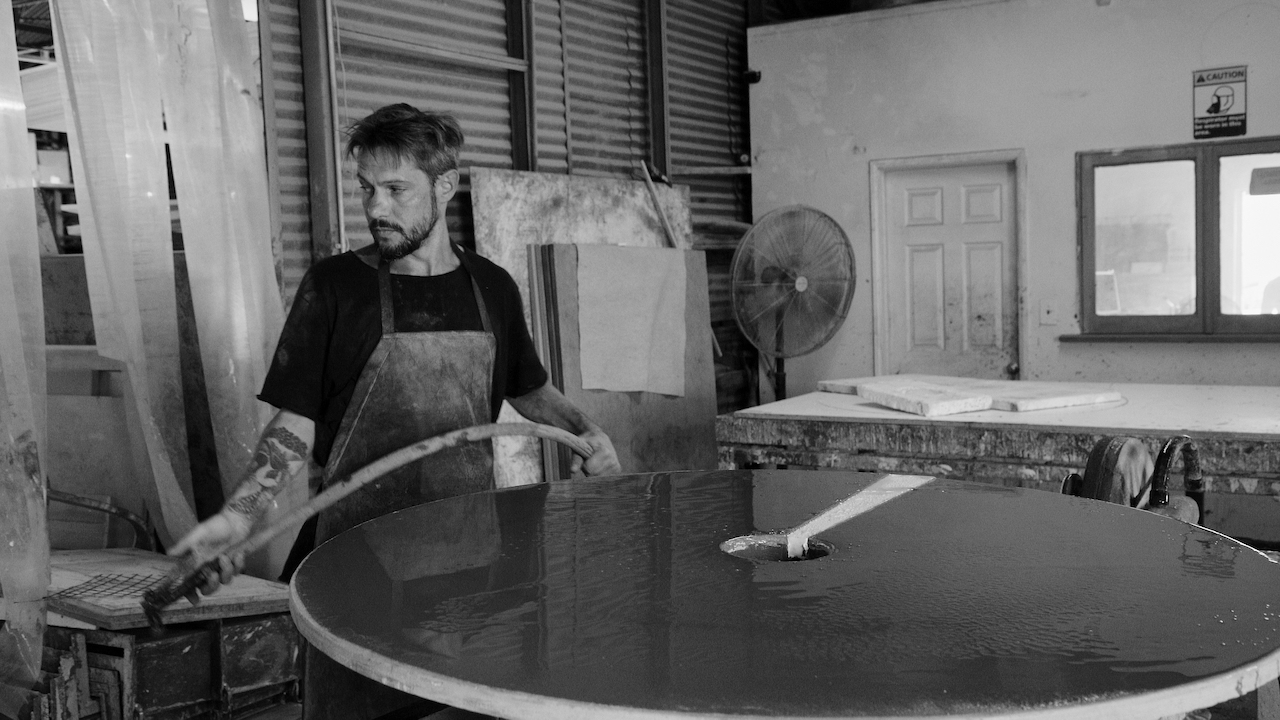
The designer working at his Los Angeles studio.
Image courtesy of: James De Wulf
It is safe to say that the design world is quite lucky that De Wulf happened to stumble upon someone making concrete beds for prisoners. The versatility of the surface was just the “lightbulb moment” that De Wulf needed. With functionality and simplicity at the core of his design ethos, he says, (courtesy of James De Wulf blog), “I never want to use something in a piece that doesn’t serve a purpose.”
